
History
In 1939, the PHA was officially established to provide affordable, clean and decent public housing to poor, working families who lived in the deplorable slums of that era. Over a 58 year period, the PHA constructed more than 2,600 units of public housing throughout this great city. Since 1976, the PHA has come to administer over 2,700 Section 8 vouchers.
The PHA’s devotion to provide housing and services to those in need is persistent, enduring, and innovative. The agency’s commitment to be a better neighbor, to actively pursue ways to improve the health and safety of our residents, to strategically align visions with our community partners and to help people grow has never waned. The PHA, its staff and residents, look forward to continuing to provide homes and service to the greater Providence area.
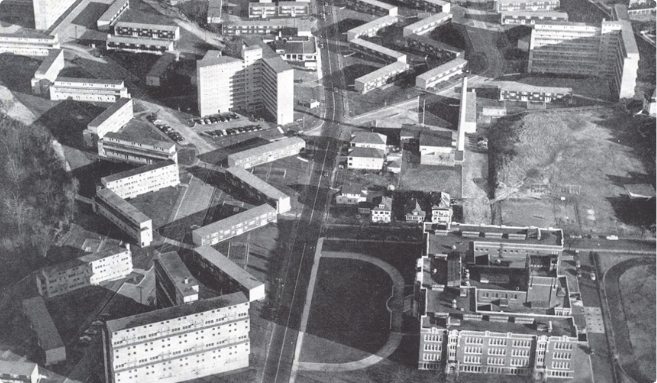
Currently, the PHA administers 2,606 public housing units that house over 5,500 residents. These units are designated as elderly/disabled, family, and scattered sites developments. It oversees the administration of 2,700 Section 8 tenant based and project based vouchers that generally allow low-income families to rent in the private market.
The PHA is a quasi-governmental organization, governed by a Board of Commissioners appointed by the Mayor and Providence City Council, and run by an Executive Director who reports to the Board.
PHA History Timeline
2022
PHA completes a $2 million lead abatement project at Chad Brown Apartments or the National Association of Housing and Redevelopment Officials Awards PHA two national Awards of Merit for its response to the Covid-19 pandemic and for the Wellness resource Center.
2021
PHA establishes two new housing voucher programs with the award of Mainstream and Emergency Housing vouchers by HUD.
2020
PHA launches an inter-agency team to respond to the Covid-19 crisis providing emergency food, access to onsite testing and vaccination, and distribution of PPE to residents.
2019
PHA establishes the Wellness Resource Center, a holistic approach to improving the quality of life and fostering housing stability for public housing residents.
2018
PHA appoints Melissa Sanzaro as the agency’s first female Executive Director.
2017
PHA launches a $3 million HUD Jobs Plus grant to assist PHA residents enter the workforce or increase earned income.
2016
PHA collaborates with RI Legal Services and is one of 18 housing authorities nationwide to be awarded a Juvenile Re-Entry Assistance Program Demonstration Grant.
2014
2014 marks the PHA’s 75 Year Anniversary. Today, in the midst of a severe economic downturn, the Providence Housing Authority pushes into the future and renews its pledge to provide decent, safe, and sanitary housing for those in need.

2013
For the first time in the agency’s history, the PHA is awarded NAHRO’s Award of Excellence for the Smoke-Free Documentary. The documentary was created to share the PHA’s successes and challenges with implementing a smoking ban and it also promoted healthy housing initiatives among other housing providers. The Hartford Park gym which was built in 1974 was demolished.
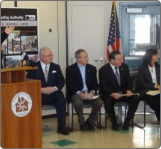
2012
The PHA’s Education & Training Center (ETC) opens at the Codding Court Community Center in order to expand adult basic education and job training opportunities for residents. The PHA installs solar panels to produce domestic hot water at Sunset Village in efforts to save on utility costs and be more environmentally and energy efficient.
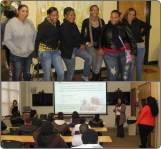
2011
The PHA’s Family Success Center (FSC) is established to create opportunities for low-income PHA families to attain financial stability and long-term economic success. The PHA’s FSC is one of only five operating FSCs in the state and is considered a high performer. In 2011, the PHA established the first phase of its Smoke-Free Policy in 5 elderly and disabled high-rises. The PHA is recognized as a leader in the national smoke free public housing movement.
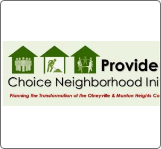
2010
In 2010, the PHA is awarded $250,000 in HUD’s Choice Neighborhood Initiative Planning Grant funds. The PHA was one of the nation’s first Planning Grantees and collaborated with Olneyville Housing Corporation, the City’s Planning & Redevelopment Department, Rhode Island’s Local Initiatives Support Corporation, Meeting Street and Trinity Financial to comprehensively plan the revitalization strategy of the entire Olneyville neighborhood while simultaneously unifying the Manton Heights public housing site. In June 2014, the planning team, with the help of EJP Consulting Group, successfully submitted the Build Olneyville Plan (which can be found at

2009
The PHA designates $5.1 million dollars from the 2009 American Recovery and Reinvestment Act (ARRA) to restore its developments while adding or retaining more than 120 jobs.

2007
The Housing America Campaign attracts 200 residents, politicians and housing authority directors in support of the public housing program. The PHA’s history book is written and published by Paul Campbell. Thanks to the collaboration efforts of the PHA and Winn Development Company, the Williams Woods housing development is completed with 65 units of two and three bedroom townhomes.
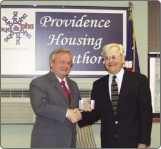
2006
The Resident Services Community Center is dedicated to former Chairman of the Board, Dr. Thomas Anton.
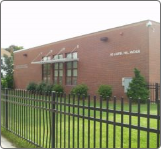
2004
The Resident Services and Facilities Management Departments move into the buildings located at 40 and 50 Laurel Hill adjacent to the Hartford Park development.
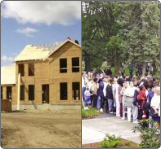
2003
In 2003, construction begins at Williams Woods, located at the previously abandoned/demolished Roger Williams development. The PHA’s population is increased by nearly 47% from 3,936 in 1990 to 5,773 residents due to the of modernization programs at Manton Heights, Hartford Park, Codding Court and Scattered Sites.
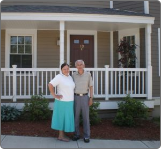
2000
The Homeownership Program begins in 2000. At this time, 23 PHA residents are enrolled.
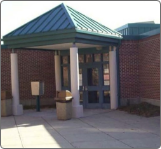
1998
In 1997, Codding Court’s new Community Center is completed and opened. Modernization and construction of Manton Heights, Hartford Park and Scattered Sites are completed in 1997. At Roger Williams Park Casino, the PHA receives more than 5,000 applications for the Section 8 and Public Housing waiting lists. This marks the last time the PHA’s Section 8 list was open.
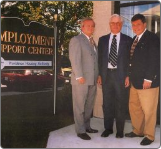
1995
In 1995, HUD approves an allocation plan to designate Dominica Manor and Carroll Tower as Elderly Only buildings. In 1997, the Employment Support Center is opened to consolidate adult education, job readiness, homeownership and computer skills programs.
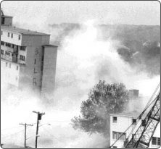
1994
Modernization of Codding Court begins. The 335 Hartford Park Tower renovation is completed along with the addition of a spacious community room.
1993
HUD revamps the Family Self-Sufficiency Program, known as Operation Bootstrap which offers attractive incentives for residents who complete education and job training. The PHA is a pilot site for this program and within one year successfully enrolls 50 PHA residents—leading HUD to award the PHA an additional 27 Section 8 certificates. The modernization of Manton Heights begins.
1990
In 1989, the modernization of Hartford Park begins with the demolition of Hartford Park Tower. In the same year, the PHA is removed from HUD’s Operationally―Troubled Housing list. In 1990, the HOPE VI Program is created in order to help residents of Scattered Sites. HUD also approves 92 additional Scattered Site units.
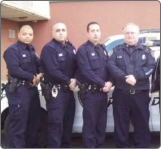
1988
The Public Housing Unit is established.
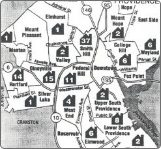
1987
In 1987, HUD gives the PHA $14.4 million dollars to begin construction on 184 units of Scattered Site housing throughout the City.
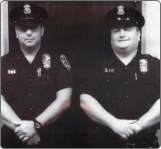
1986
In 1986, Mayor Vincent A. Cianci assigns the Providence Police Department Reserves to patrol the City’s elderly high-rises. The PHA assumes control of the Department of Elderly Affairs’ Elderly Housing Security Program.
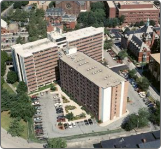
1984
The PHA is removed from the Financially―Troubled Housing list in 1983. Construction of Dexter Manor II (90 units) begins in 1982 and is completed in 1984. This becomes the new site of the PHA’s executive offices.
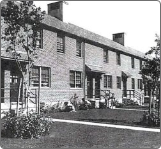
1982
In 1982, the CPO, now called the Housing Security Force, consists of 1 PPD Officer, Paul O’Rourke, and 6 Housing Security Officers. By 1983, Patrolman O’Rourke and Patrolman Jack Costa are the only officers assigned to patrol PHA developments city-wide.

1978
The HUD–funded Urban Initiative Program in 1978 allows the PHA to expand social services, train and hire tenants and involve residents in the management of their developments. This year, PHA youth visit Camp David.
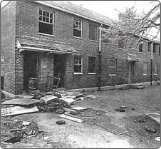
1974
The modernization of Chad Brown and Admiral Terrace begins. On August 11, 1974, the Section 8 program was signed into law under President Richard Nixon’s ―New Federalism.
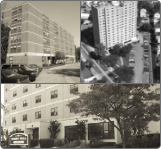
1973
Carroll Tower, Kilmartin Plaza and Parenti Villa are completed and open for occupancy.
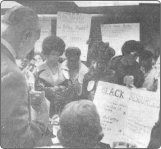
1971
In 1971, PHA residents hold a rent strike demanding more security. Demonstrators protest in the office of Providence Police Chief Walter McQueeny.In response, the City and the Providence Police Department instituted the Community Protection Officer Program (CPO) with 22 officers to police and patrol the public housing sites—on foot and without weapons. The CPO is also used to recruit and train young officers for the police academy.
1970
In 1970, the Tenants Affairs Board strengthens its position considerably with the appointment of three PHA tenant representatives to the PHA’s Board of Commissioners: ● Edna Rowley from Dexter Manor ● Mary Peckham from Hartford Park—advocate for the elderly and champion of the efforts to build a HP community center, and; ● William B. Cooley from Roger Williams—the director of Rhode Island College’s talent development. Their appointments expand the Board from five to nine members.
1968
Legislation is passed into law establishing the Tenant Affairs Board (which is known today as the Resident Advisory Board).
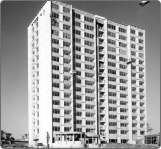
1966
Manton Heights is completed and opened for occupancy. The Bradford House (later named Sister Dominica Manor) is completed.
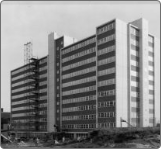
1962
Dexter Manor, a 200-unit high-rise, is completed and opened for occupancy. The three-day open house in 1962 brings more than 8,000 applicants as the building is marketed as a luxury, city high-rise.
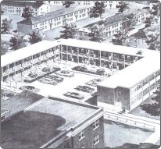
1960
Sunset Village is the first public housing development assigned for the elderly after the Housing Act of 1956. Sunset Village, a 36-unit, two story development, is dedicated and fully leased.
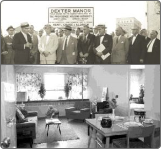
1956
The PHA successfully carries out the city’s three-phase plan to desegregate white and non-white families.
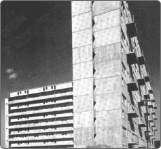
1953
One of the four Hartford Park Towers is reserved for elderly occupants only (120 units), setting national precedent for elderly housing in high-rise buildings
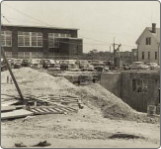
1950
On July 14, 1950 the PHA broke ground for Manton Heights and Hartford Park.
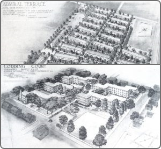
1949
The Housing Act of 1949 allows the PHA to finish existing plans for Codding Court and Admiral Terrace. Both developments would open two years later in 1951 with 120 and 278 units respectively (architectural renderings above).
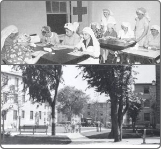
1943
With more than 40,000 of its residents on some form of public assistance, and one-third of its housing substandard, the Providence Common Council on June 16, 1939, passes the Joint Resolution 176. On July 14, David J. Barry is elected as the first Chairman of the Board and James McDonald as Executive Director. On November 8, 1939, the Providence Housing Authority is officially established.
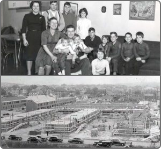
1942
The PHA’s first development, Chad Brown (321 units of housing) is finished and opened for occupancy. The Noonan family (with 14 children) is one of the first to occupy Chad Brown in 1942.
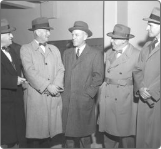
1939
With more than 40,000 of its residents on some form of public assistance, and one-third of its housing substandard, the Providence Common Council on June 16, 1939, passes the Joint Resolution 176. On July 14, David J. Barry is elected as the first Chairman of the Board and James McDonald as Executive Director. On November 8, 1939, the Providence Housing Authority is officially established.

